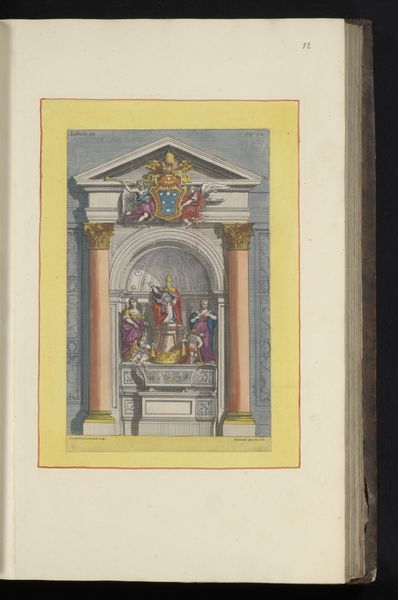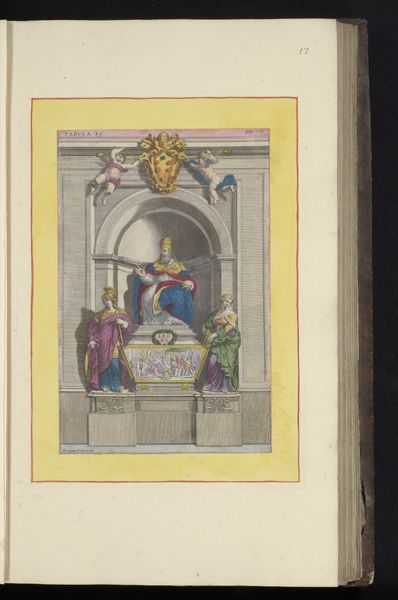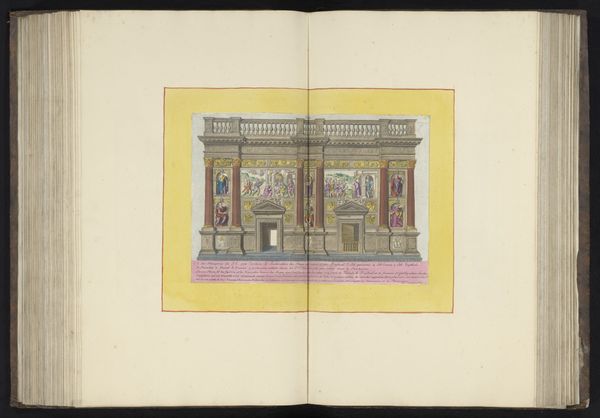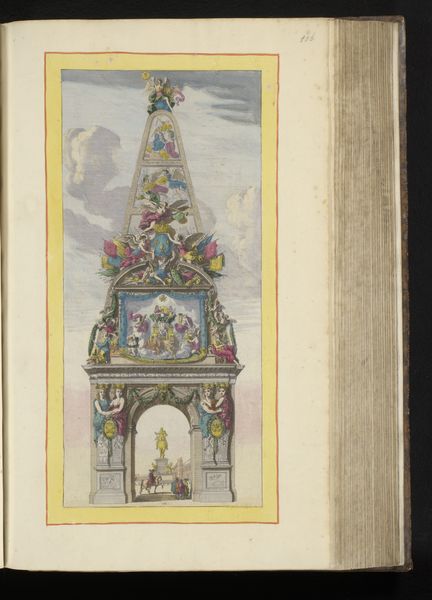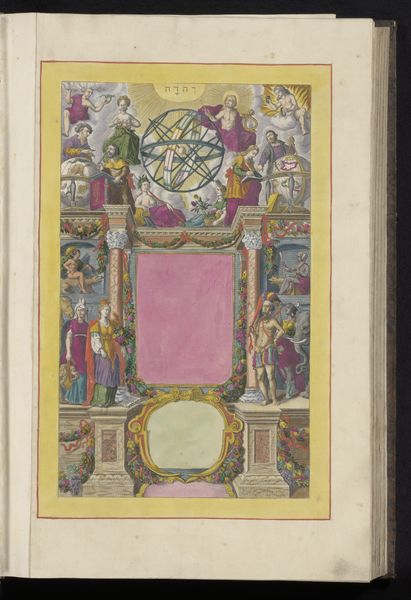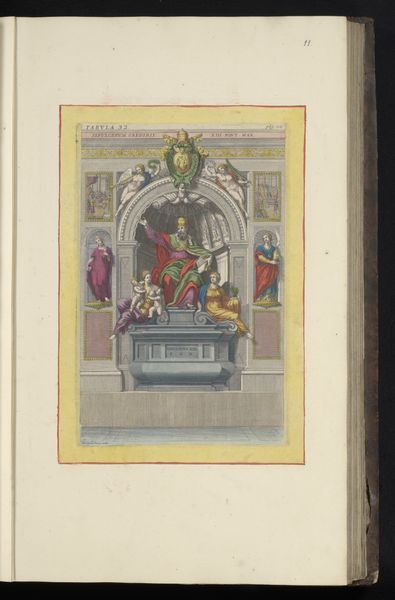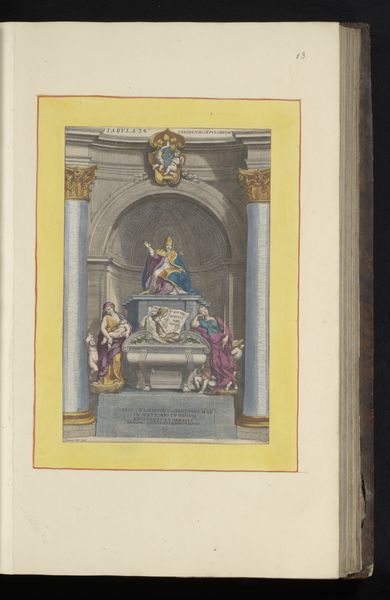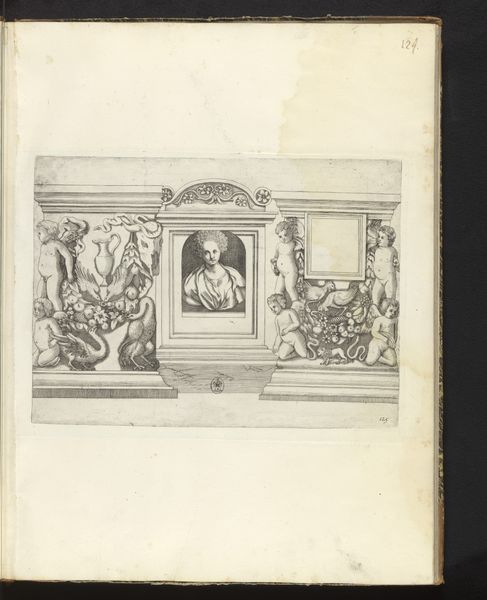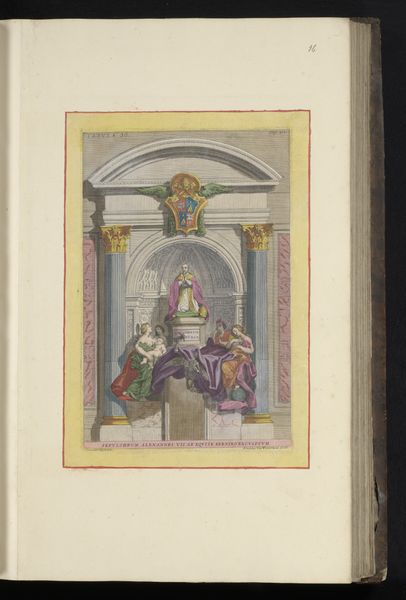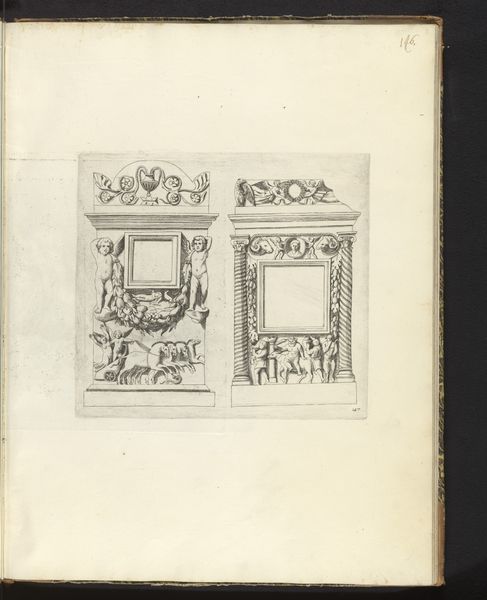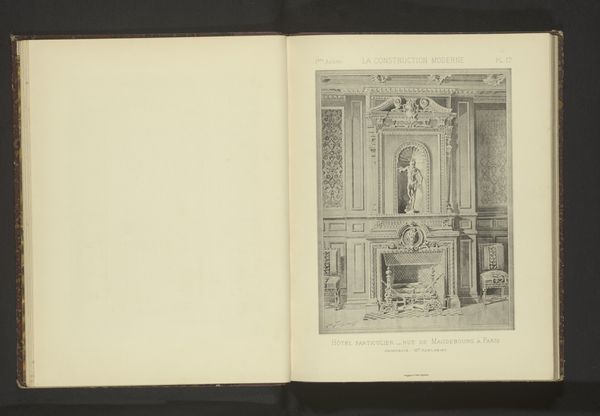
drawing, print, etching, pen, mural, architecture
#
drawing
# print
#
etching
#
coloured pencil
#
sketchbook drawing
#
pen
#
italian-renaissance
#
mural
#
architecture
Dimensions: height 238 mm, width 235 mm
Copyright: Rijks Museum: Open Domain
Curator: Here we have "Oostwand van de Santa Casa te Loreto," an etching dating from between 1686 and 1717, attributed to Hubert Vincent. It's a rendering of architecture contained within a larger book format. Editor: Immediately, I'm struck by the use of line, the symmetry, and how the coloured pencil adds such detail and delicacy, creating an overall impression of meticulously ordered grace. It invites contemplation. Curator: I agree about its graceful order. This print gives us insight into the architectural design and cultural significance attached to the Holy House of Loreto. Its depiction reveals aspects of pilgrimage, craftsmanship, and the circulation of religious ideas and materials at the time. Editor: The etching seems to be trying to convey something not only visually but almost philosophically through line, form, and color. The upper register showing the Nativity scene versus the lower registers teeming with human figures creates visual tension which is conceptually resolved by the implied verticality and implied holiness of the mural itself. Curator: Exactly. Consider, too, how these prints functioned. They served as devotional objects, souvenirs for pilgrims, and vital means for disseminating architectural ideas beyond the physical location. These small, mass-produced images democratized access to this sacred space. Editor: Looking closely at the architectural frame and figures, I see repeated instances of classical ideals – perhaps visual markers pointing to universal harmony within an earthly design? Curator: I think that is right. Also remember these prints involved collaboration, etching skills, paper production, distribution networks – a complex system of labour and resource allocation extending beyond simple artistic expression. The print itself represents this web. Editor: That contextual grounding reveals layers beyond pure aesthetics; I see both sacred design and the mechanics behind its promotion! Fascinating! Curator: Absolutely, thinking of all the hands and minds that created not just the Loreto site but then created these small disseminations of the sacred space is interesting. Editor: A perfect intersection of faith, art, and society presented to us here, thank you!
Comments
No comments
Be the first to comment and join the conversation on the ultimate creative platform.
